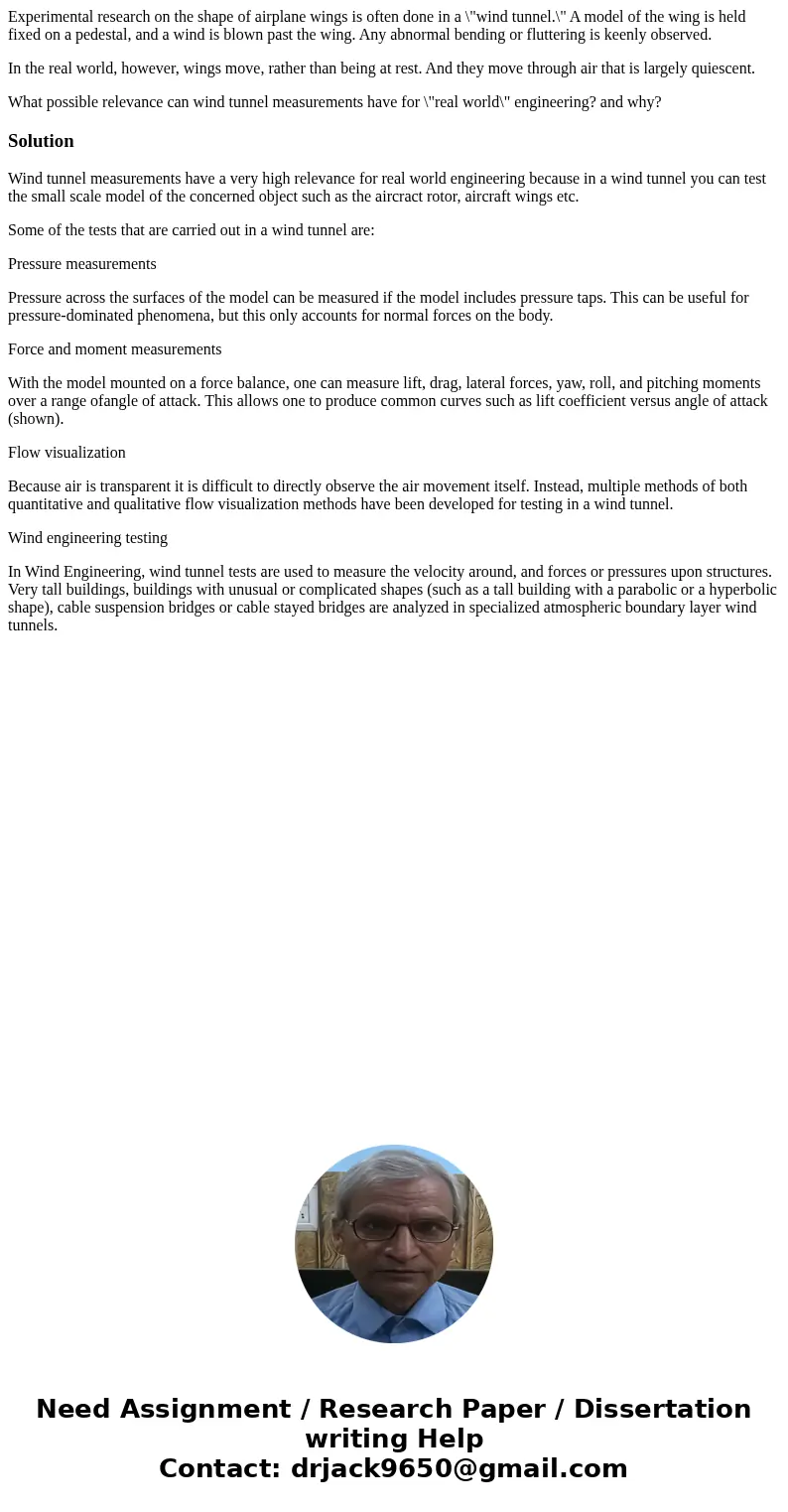Experimental research on the shape of airplane wings is ofte
Experimental research on the shape of airplane wings is often done in a \"wind tunnel.\" A model of the wing is held fixed on a pedestal, and a wind is blown past the wing. Any abnormal bending or fluttering is keenly observed.
In the real world, however, wings move, rather than being at rest. And they move through air that is largely quiescent.
What possible relevance can wind tunnel measurements have for \"real world\" engineering? and why?
Solution
Wind tunnel measurements have a very high relevance for real world engineering because in a wind tunnel you can test the small scale model of the concerned object such as the aircract rotor, aircraft wings etc.
Some of the tests that are carried out in a wind tunnel are:
Pressure measurements
Pressure across the surfaces of the model can be measured if the model includes pressure taps. This can be useful for pressure-dominated phenomena, but this only accounts for normal forces on the body.
Force and moment measurements
With the model mounted on a force balance, one can measure lift, drag, lateral forces, yaw, roll, and pitching moments over a range ofangle of attack. This allows one to produce common curves such as lift coefficient versus angle of attack (shown).
Flow visualization
Because air is transparent it is difficult to directly observe the air movement itself. Instead, multiple methods of both quantitative and qualitative flow visualization methods have been developed for testing in a wind tunnel.
Wind engineering testing
In Wind Engineering, wind tunnel tests are used to measure the velocity around, and forces or pressures upon structures. Very tall buildings, buildings with unusual or complicated shapes (such as a tall building with a parabolic or a hyperbolic shape), cable suspension bridges or cable stayed bridges are analyzed in specialized atmospheric boundary layer wind tunnels.

 Homework Sourse
Homework Sourse